Don’t believe everything you read on the internet,
despite what cryptozoologists may be telling you.
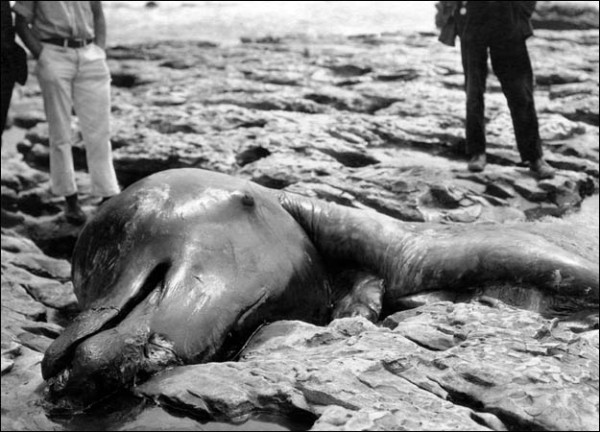
The internet is a double-edged sword of enlightenment and ignorance. It has the capacity to educate millions in ways never before possible, making science accessible, understandable, and relevant. At the same time it infects the public with idiocy, lies, pseudoscience, and the malevolent intention to mislead (kind of like Discovery Channel). Disinformation is a zombie. It is the resurrected body of mysteries solved, arguments settled, and bad science disproved, marching through half-baked websites and ‘shared’ by newly-infected readers not yet schooled in the truth, spreading fabrications and misinterpretations that eat away at the integrity of science and rot the brains of the masses.
Among the many internet zombies gnawing on science and pseudoscience blogs, the one I’ve battled is the “mystery’ of the “Moore’s Beach Monster” (sometimes called the “Santa Cruz Sea Serpent”), touted as a living plesiosaur in the modern world, a remnant of the age of dinosaurs in the 20th Century, and proof that ancient beasts still live among us. It has become a perennial icon for conspiracy-paranoid cryptozoologists and fundamentalist creationists. In fact, there never was a plesiosaur, and even upon its discovery, the remains of a decomposing beached carcass was shown most definitively not to be a plesiosaur, but dozens of internet sites still push the plesiosaur hoax. I get enough inquiries about the reptilian validity of the Moore’s Beach Monster every year that even the Travel Channel tried to help me debunk it in an episode of Mysteries at the Museum.
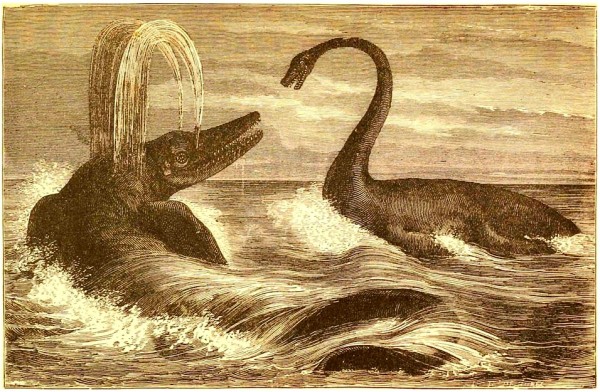
From the time humans walked on two legs between the beach and the tides, and after the first of our ancestors took to the ocean, “sea serpents” were commonly observed at sea or cast upon beaches, celebrated locally and later ingrained into regional lore. During the 1800s and 1900s, the advent of cameras recorded these events in grainy sepia-toned images, some real, some retouched. The immediacy and broadcast of newspapers brought these sea monster sensations to a wider audience and heightened celebration of such mysterious beasts. These were the grotesque remains of otherwise normal animals that fear, ignorance and imagination transformed into nightmarish beasts.
Few of the old photos that do exist of these creatures are usually enough to identify what they were, which are decomposed present-day species like whales, basking sharks, or large deep-sea fishes, or even sturgeon and rotting raccoons. Most often, these are lumps of decomposing flesh or blubber, or more rarely the skeletal remains of a carcass. And since the general public cannot often identify a whole organism on a beach, let alone rotted parts of them, they are labeled as ‘sea monsters’. In fact, the term “blob monsters” or “globsters” is common in the cryptozoology literature for such unidentifiable putrid lumps, while still earning outlandish identifications. Superstitious mariners and uneducated beach goers don’t usually make accurate and objective observers.
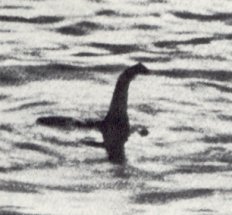
Contemporary cryptozoologists continue claims from Victorian times that sea serpent legends may be based on still-living marine reptiles called plesiosaurs, which died out some 65 million years ago. With their long flexible necks, rotund bodies with paddle-shaped limbs, they do fit the description of some famous monsters, but could they be alive today? What about the striking similarities with the Loch Ness Monster in that iconic photograph? No, it was a suspected hoax confirmed by a death-bed confession from one of the perpetrators. What about that decomposing plesiosaur carcass hauled up by the Japanese trawler Zuiyo Maru off New Zealand in 1977?

Nope, that was the rotting carcass of a basking shark, clearly showing diagnostic elements of the cartilaginous shark skeleton, and later confirmed by biochemical study of its remains. But one particularly newsworthy sea serpent that has weathered nearly a century of attention, creating a cycle of dismissal by scientists and resurrection from armchair naturalists and self-appointed cryptozoologists, is that of a carcass that washed up on Moore’s Beach in the central California coastal town of Santa Cruz in the summer of 1925
With a ‘duck-like’ head and what appeared to be a long neck, this animal justifiably caused a local stir, but getting a true angle on the story is virtually impossible. Various first-hand accounts tell of a beast covered in feathers, and also in hair, and had wrinkly skin like an elephant. Oh, and it had elephant legs with elephant toenails. But it had flippers too, and the tail of a whale. Again, uneducated beach goers don’t usually make accurate and objective observers. But, as the recycled story goes, one E. L. Wallace was on the scene, and after a thorough examination declared that this was positively and conclusively the remains of a plesiosaur, and being toothless, a vegetarian one at that. It must have died back in the age of the dinosaurs, at least 65 million years ago, and was trapped in ice, which dislodged from a northern glacier and floated its way south, defrosting as it flowed, ultimately releasing its ancient cargo on the beach at Santa Cruz.
Armed with such a wild and on-the-spot pronouncement, the press ran with this, and the word finally reached the scientists at the California Academy of Sciences up the coast in San Francisco. That “duck-like” head seen in the photos was brought back to the museum, and its prepared skull became irrefutable proof of what the monster really was – a decomposing carcass of a Baird’s Beaked Whale, no matter how much arm-waving and imaginary examination of the old black-and-white photos people may expound based on their limited dilettantism in comparative anatomy. The long “neck” is a twisted cape of blubber still attached to the head, having been eroded from the rest of the body after weeks of slow decomposition. With the actual skull archived in a museum and accessible to researchers, the true identification of the “Moore’s Beach Monster” is undeniable.
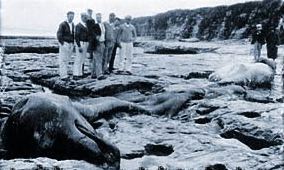
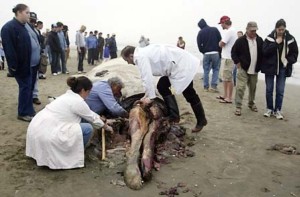
My interest in this animal, and repeated vigilance to continue debunking those interested in fancy over fact, first started when I was the collections manager, and later acting curator, of the Ornithology & Mammalogy collections at the California Academy of Sciences, caretaker of the Moore’s Beach Baird’s Beaked Whale skull, where it still resides to this day. Moreover, after 15 years working with the National Marine Mammal Stranding Network and seeing literally hundreds of whales, dolphins, seals, and sea lions in a bewildering array of decomposition, dismemberment, and disassembly, I understand how a Baird’s Beaked Whale can decompose into the photos depicting the alleged ‘plesiosaur’ to those unskilled in basic cetacean anatomy. Fortunately, I have dissected one of the few adult male Baird’s Beaked Whales washed ashore in California over the last century, and literally know this species inside and out. But prior to my contemporary involvement with the Moore’s Beach whale, the animal already had an earlier legacy with my institution.
After first hearing of the so-called sea monster, Barton Warren Evermann, the director of the California Academy of Sciences and a trained marine biologist with experience in anatomy and marine mammals, immediately declared it to be a beaked whale, though he did not know which kind it was. Also involved in the examination were G. Dallas Hanna, another Cal Academy scientist who had experience with Baird’s beaked whales (and their beached carcasses) during his time exploring Alaska, and M. E. McClellan Davidson, the curator of Ornithology & Mammalogy at the Cal Academy. The skull was later examined by Remington Kellogg, perhaps the most influential expert in whales at the time, and one who had deep experience with beaked whales. These are all accredited, experienced scientists with a published track record, and all had the same conclusion about the true identification of the “monster”, and published their findings as a note in the Journal of Mammalogy. Strangely, none of the cryptozoology sites ever reference these trained scientists who did a detailed study on the Moore’s Beach Monster’s remains.

The real mystery here is E. L. Wallace, the first person to investigate the carcass and dub it a plesiosaur, and the only scientist mentioned in cryptozoological writings about the monster. Outside of the Moore’s Beach event, there is no record of him. In various retellings of this story littering the internet, he is referred to as “renowned scientist” or “noted naturalist,” but someone who is “noted” or “renowned” has an academic history, a trail of research, publications, presentations, expeditions, colleagues, students, archived specimens, and achievements. I’ve done a fairly exhaustive search for any evidence of his existence from scientific literature at the time, and have uncovered absolutely nothing.
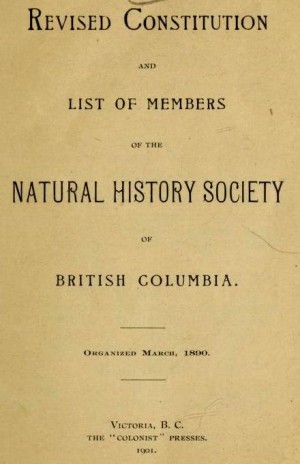
Moreover, he is alleged to have been the president of the Natural History Society of British Columbia twice, from 1890-1904, but the records from this society have no mention of him. For example, in the 1891 and 1901 annual reports of the Society he is not listed as the president, nor as an officer, and not even as a member of the Society. He had no association with this group. Simply, E. L. Wallace the scientist never existed. This is the real hoax. Either some scientist impersonator dubbed “E. L. Wallace” ordained himself “noted naturalist” in an attention-grabbing act of grandstanding and duping local press and public alike, or the name and association was a post-facto fabrication in later writings intended to instill some sense of authority to the plesiosaur claim.
Also, the second-hand reiterations of this story portray E. L. Wallace as making a “thorough examination” of the carcass, but when the California Academy scientists arrived, there had not been a necropsy of the carcass, no samples collected, no close-up photos taken, no sketches made. The mysterious E. L Wallace made no “thorough” examination at all. Moreover, his alleged explanation of the origin of the carcass, re-copied and further embellished through generations of websites and magazine articles with no clear initial origin, is totally unsupported by any wisp of fact. He alleged that the animal, the seagoing plesiosaur, was frozen in an iceberg and somehow transported and thawed when it came aground at Santa Cruz, but here are some inconvenient facts:
– Plesiosaurs lived more than 65 million years ago, yet the first Ice Age began only 2 million years ago.
– Plesiosaurs lived in tropical and subtropical seas, never in areas where they had a remote chance of being encased in a giant ice cube.
– There are no instances of glaciers or icebergs older than 10,000 years in the northern hemisphere, and in fact, the ice of most of those glaciers is only a few thousand years old.
– Arctic icebergs rarely ever flow south of central Alaska and have never been recorded in California.
– The carcass shows no visible signs of having been frozen (eg. wrinking from freezing dessication) for 65 million years.
– All plesiosaurs are carnivores, though E. L. Wallace claimed this one ate plants, which shows an abject lack of knowledge about plesiosaurs.
– Plesiosaurs have been extinct for 65 million years anyway, so the previous arguments are moot.
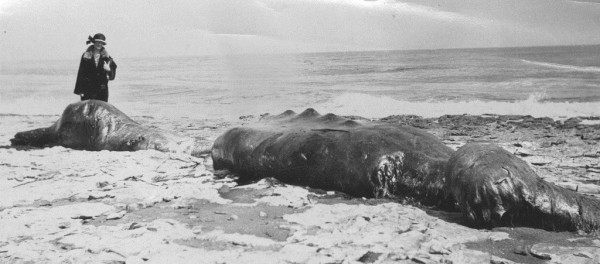
In short, there was no plesiosaur because the remains of that animal are 100% identifiable as the skull of a Baird’s Beaked Whale. There was never the ‘”naturalist” E.L. Wallace, and if there was, he was no scientist, he was never connected with the Natural History Society of British Columbia, he never did a thorough examination of the Moore’s Beach Monster, and knew absolutely nothing about plesiosaurs. Yet those bearing an agenda on the fringe of science denialism blindly cite this imaginary non-scientist as an authority, and dismiss the initial correct identification made by four actual scientists who have a well-documented history, nor the dozens of scientists in the following 89 years who have seen the actual skull of the Moore’s Beach Monster and reached the same conclusion as those California Academy scientists did in 1925.

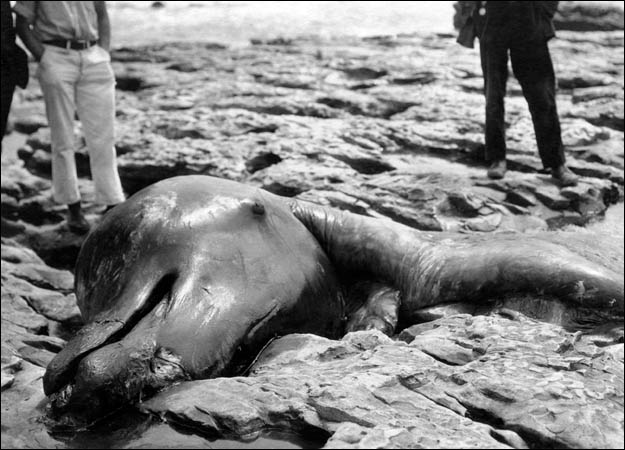


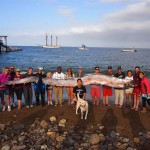

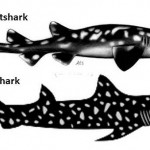
You tell ’em Douglas!!
Unless that photo was taken post 1965, that is definitely not the UCSC Glee club. ANOTHER CONSPIRACY.
As someone who has poked into this quite a bit, and agrees there are (unfortunately) no surviving Mesozoic reptiles, I am curious whether you have any speculations on what Nicoll and Meade-Waldo described in 1905. (I provide a link here for convenience: please remember it’s from 2006, so yes, I know Mesoplodon Species A and B are now solved mysteries.) http://mattbille.blogspot.com/2006/02/scientists-and-sea-serpent.htm
“Plesiosaurs lived in tropical and subtropical seas, never in areas where they had a remote chance of being encased in a giant ice cube.”
Minor correction: there are plesiosaur fossils from the high Arctic and the Antarctic, however from what I can tell the climate would qualify as ‘temperate’.
You are taring us all with the same brush. Yes there are loonies and creationist nut-bags but there are also level-headed researchers.
I do not, for one moment think there are living dinosaurs (except for the ones that go ‘tweet’) or plesiosaurs. I do however entertain the idea of large, unknown marine animals, a possible new species of ape in western Sumatra, the continued survival of the Tasmanian wolf, a unknown, burrowing reptile (most probobly a worm lizard) in the Gobi and the odd outsized specimen of the green anaconda.I work with scientists at the University of Copenhagen and elsewere.
“Plesiosaurs lived in tropical and subtropical seas”
Minor correction: Plesiosaurs are quite well-documented from the high Arctic and Antarctic. These waters would apparently best be described as ‘temperate’ rather than ‘polar’ so there still wouldn’t have been any plesiosaurs on ice.
Nice article.
Just one point of correction: there were plesiosaurs living is sub-arctic waters. Recent research suggests that not only plesiosaurs but also ichthyosaurs and marine crocodiles were facultatively warm-blooded. Life in mesozoic seas was very strange by modern standards.
That doesn’t of course change the fact that nothing in these supposed sightings of modern plesiosaurs describes anything remotely comparable to any aspect of their anatomy.
When you write “Contemporary cryptozoologists continue claims from Victorian times that sea serpent legends may be based on still-living marine reptiles called plesiosaurs” and then base it on only one flimsy example, you are engaging in gross generalizations and ad hominem evidence. Most modern cryptozoologists, actually, DO NOT suggest that plesiosaurs and other extinct marine reptiles are the source of “Sea Serpent” sightings. Openminded, critical thinking, and skeptical cryptozoologists explore the possibilities of mistaken identifications, known extinct pinnipeds and ancient cetaceans as the source of these accounts.
Note that the stamp showing Baird’s Beaked Whale is not a real Russian stamp, but an instance of what is termed “cinderella stamps” or “artistamp” (I had to look Wikipedia for those, one always learns something new!)
Newer versions of that stamp can be found here: http://vitusbering.wordpress.com/
Well, I guess using country name “North Pacific International Waters” is now stoking less patriotic ire in Russia than suggesting that some separatists would dare to print their own stamps at Командо́рские острова́!